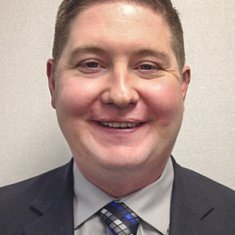Medicare Payments for Swing-Bed Services at Critical Access Hospitals
Brian Anderson, a senior auditor for the Office of Audit Services, is interviewed by Clemente Torres, a senior auditor in Chicago.

Transcript
[Clemente Torres] I'm Clemente Torres, senior auditor in Chicago, Illinois, speaking with Brian Anderson, a senior auditor also in our Chicago office. Brian, your team recently completed a review of Medicare reimbursement of swing-bed Services at critical access hospitals. Can you tell us more about that?
[Brian Anderson] I'd be glad to. To start, Congress established the Rural Flexibility Program which created Critical access hospitals to ensure that beneficiaries in rural areas have access to a range of hospital services. Critical access hospitals enjoy special Medicare payment rates that are often higher than payments in other facilities. To qualify, hospitals must be small and rural and, if not grandfathered in to the program as a necessary provider, located at least 35 miles away from another hospital.
[Clemente Torres] Do critical access hospitals provide the same services as other hospitals?
[Brian Anderson] Critical access hospitals have broad latitude in the types of inpatient and outpatient services they provide. Critical access hospitals can also treat patients in something called "swing-beds."
[Clemente Torres] What's a swing-bed?
[Brian Anderson] Swing-bed means that a patient can swing from inpatient to skilled nursing care without actually leaving the hospital, or even the bed they are in. In most hospitals, when a patient no longer requires acute inpatient hospital care and only requires skilled nursing care, Medicare stops paying for hospital care and the patient is transferred home or to a skilled nursing facility. Medicare pays for skilled nursing care on a prospective payment system. The swing-bed policy allows a patient to stay in a critical access hospital after hospital-level care is no longer required and transition to receiving the kind of services generally provided in nursing homes or other settings.
[Clemente Torres] So the patients can stay in the hospital even though their clinical needs don't rise to the level of hospital care?
[Brian Anderson] That's right.
[Clemente Torres] And how does Medicare pay for this? Is it the same payment as if the patient were transferred to a nursing home?
[Brian Anderson] No. The payment is different, and generally much higher. Medicare pays Critical access hospitals 101 percent of their reasonable cost. This generally yields the Critical access hospital a higher payment than Medicare's prospective payment system would offer a skilled nursing facility for providing the same services.
[Clemente Torres] How much higher are Medicare's payments?
[Brian Anderson] $4.1 billion dollars. If Medicare had paid critical access hospitals rendering nursing care in swing beds the same rate it pays skilled nursing facilities for these services, over the six years we reviewed Medicare would have saved $4.1 billion.
[Clemente Torres] Why would Medicare pay so much more to a critical access hospital when that might encourage the hospital to keep the patient instead of transferring the patient to a local nursing home?
[Brian Anderson] Not all areas have a local nursing home. One reason Congress established the Critical access hospital system was to attract providers to rural areas. In fact, to become a critical access hospital, the hospital must be located at least 35 miles away from another hospital. Without these hospitals, some Medicare beneficiaries would not have easy access to the care they need.
[Clemente Torres] For the critical access hospitals you reviewed, was there an absence of other facilities nearby?
[Brian Anderson] No. Not for the vast majority. Our review actually found that, for 90 percent of the Critical access hospitals we sampled, nearby facilities had capacity to serve the swing-bed patients.
[Clemente Torres] How did you conduct your review? Can you walk us through it?
[Brian Anderson] Sure. First, we took Medicare payments to Critical access hospitals for swing-bed services and compared those to payments for similar services in other facilities. Then, we checked to see if beneficiaries who received swing-bed services could receive those same services at a nearby facility. So we reviewed a random sample of 100 Critical access hospitals. For each sampled hospital, and all alternative facilities within a 35-mile radius, we determined whether these facilities had the capacity to cover the number of bed days patients needed throughout the year.
[Clemente Torres] So you didn't simply check that another facility existed within 35 miles of the critical access hospital, you also measured whether the nearby facilities offered sufficient capacity to serve the patients?
[Brian Anderson] Exactly. That's how we reached our conclusions.
[Clemente Torres] Sounds like you found a significant problem. How can this be fixed?
[Brian Anderson] We recommend that the Centers for Medicare & Medicaid Services ask Congress to adjust critical access hospital swing-bed reimbursement rates to the lower Medicare pre-determined rates paid for similar services in other settings.
[Clemente Torres] How did that agency respond to this recommendation?
[Brian Anderson] CMS agreed with our findings that critical access hospital swing bed utilization has increased but disagreed with our recommendation because of concerns with our findings on the availability of skilled nursing services at nearby alternative facilities and our calculation of savings.
[Clemente Torres] Thank you, Brian, for sharing such important work your team has done in critical access hospitals.
[Brian Anderson] You are very welcome.
